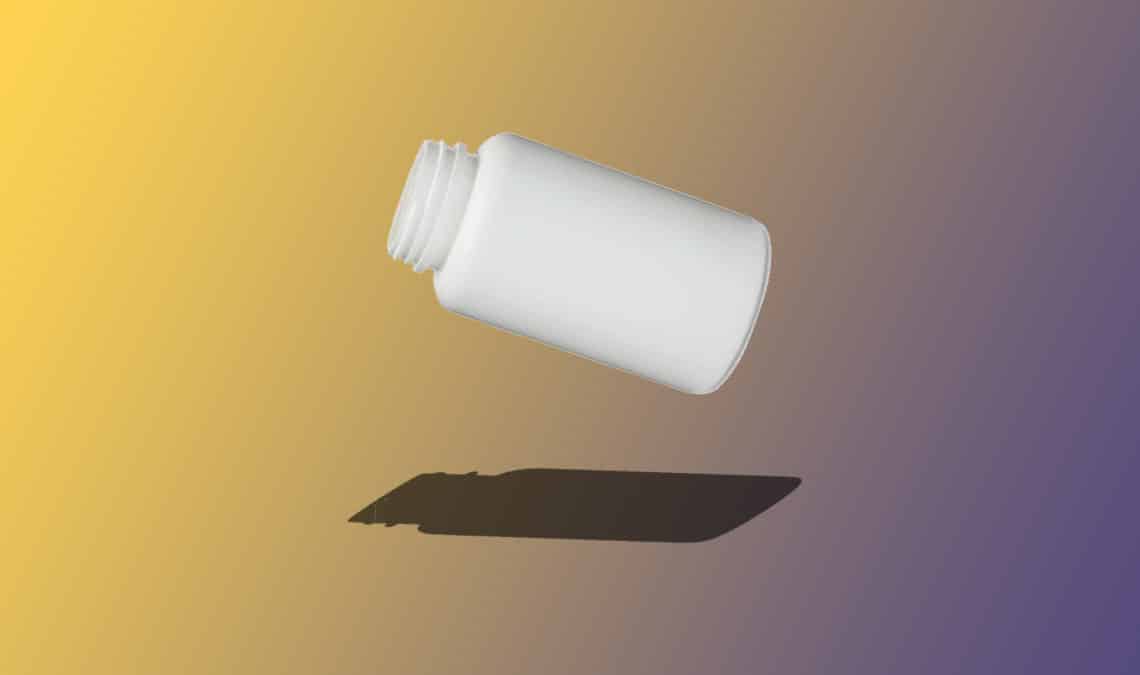
ALA (alpha-linolenic acid) and GLA (gamma-linolenic acid) are two essential polyunsaturated fatty acids which your body can’t function without. It is vital that your body maintains a healthy ratio between omega-3s (ALA) and omega-6s (GLA). GLA and ALA are anti-inflammatories, and ALA also possesses neuro-protective and anti-depressant properties.
ALA and GLA are most often consumed through oral supplementation with softgel capsules—though there are combined oil alternatives. Dietary sources of ALA include plant oils extracted from seeds, such as blackcurrant seed oil and flaxseed oil, or simply consuming whole seeds including chia seed and hempseed. GLA is also found in blackcurrant seed oil, but primarily in evening primrose oil and borage oil.
In this article, we’ll give you our recommendations for the best ALA supplement and best GLA supplement in several different intake formats—capsules, oil, and in whole foods.
What Are ALA And GLA?
ALA
Alpha-linolenic acid (ALA) is an essential polyunsaturated, omega-3 fatty acid, which is often deficient in the classic western diet. ALA is considered an essential fatty acid as your body cannot synthesize ALA naturally, so ALA must come from your diet.
When ingested, your body either uses ALA immediately, or further converts ALA into two other important omega-3s: EPA and DHA. However, this conversion is very inefficient in humans (5-10% of EPA and 2-5% of DHA is produced), therefore it is important to focus on the health benefits solely provided by ALA.
Current research demonstrates that ALA has neuroprotective, anti-inflammatory and antidepressant properties. For example, ALA appears to have therapeutic potential for reducing stroke risk in patients and treating depression post-stroke, though this theory stems from rodent models. ALA’s role as a cardio-protective compound remains disputed.
GLA
Gamma linolenic acid (GLA) is a polyunsaturated, omega-6 fatty acid. Unlike ALA, your body synthesizes GLA from another omega-6 fatty acid, linoleic acid (LA), which is found in foods containing plant oils such as sunflower oil, and other plants including flaxseed. GLA itself is primarily found in plant oils and can further metabolize into dihomo gamma-linolenic acid (DGLA) – a precursor for anti-inflammatory eicosanoids.
Unfortunately, GLA’s natural synthesis can decline with advanced age, high alcohol intake, smoking, diabetes, eczema, and high cholesterol. If you fall into any of these categories, supplementation is recommended to boost your GLA levels. Due to the reduction of GLA associated with age, older individuals suffer from osteoporosis and rheumatoid arthritis—two conditions which are found to dissipate upon GLA supplementation as GLA is an anti-inflammatory.
Why Do You Need The Essential Fatty Acids That ALA And GLA Can Provide?
Essential fatty acids are vital for keeping healthy, yet they are not naturally synthesized by your body. Therefore, it is crucial that they are included in your diet. Within essential fatty acids, there are omega-3 (e.g. ALA) and omega-6 (e.g. GLA) polyunsaturated fatty acids—meaning multiple carbon-carbon double bonds along the fatty acid chain.
The current western diet has an average omega-6 to omega-3 ratio of 15:1-16.7:1—a huge contrast to the 1:1 ratio which humans evolved on. Excessive omega-6 ingestion in fact promotes disease prevalence such as cancer, cardiovascular diseases and inflammatory diseases. A lower fatty acid ratio is ideal for preventing specific conditions e.g. 2.5:1 for colorectal cancer. Therefore, increasing your consumption of omega-3 PUFAs to lower the ratio is suggested.
In your body, essential fatty acids are important structurally for cellular tissue including the brain, retina and spermatozoa. For example, in the retina, if an individual is deficient in essential fatty acids, they suffer from poorer vision due to reduced membrane fluidity. Therefore, supplementing with essential fatty acids is recommended to maintain healthy cellular tissue.
What Are The Effects And Benefits Of ALA And GLA?
ALA
ALA carries a diverse range of health benefits. Firstly, ALA targets and increases BDNF (brain-derived neurotrophic factor) which improves brain maintenance and aids in stroke prevention. Cardio-protective effects have been hypothesized concerning ALA, yet only EPA and DHA (downstream products of ALA) have been shown to improve triglyceride levels and HDL levels (two important cardio-protective measures).
Further study is required to explore the effect of ALA individually on cardiovascular health. In older individuals, ALA may carry protective effects on age-related diseases. ALA taken with linseed oil protects against rheumatoid arthritis in rodents—this finding still remains disputed in humans. Studies exploring ALA’s downstream products EPA and DHA hint at possible therapeutic solutions for rheumatoid arthritis. More encouragingly, studies have identified that hip fracture risk is lower in older adults with high ALA levels.
GLA
GLA is considered an anti-inflammatory supplement as GLA further metabolizes into dihomo gamma-linolenic acid (DGLA), which undergoes oxidative metabolism to produce anti-inflammatory eicosanoids. So far, marked improvements are seen in patients taking GLA with chronic inflammatory diseases including atopic dermatitis, acne, osteoporosis and rheumatoid arthritis. However, poor study design and limited cohort sizes may limit the validity of some of these studies..
Interestingly, patients who are in ICU with acute lung injury (a severe inflammatory process) are recommended to take GLA and EPA (an ALA derivative) supplements to shorten their hospital stay – an indication of the potential therapeutic synergy between GLA and ALA.
The Best ALA Supplement And Best GLA Supplement
ALA and GLA supplements generally don’t contain isolated or extracted ALA and GLA. Instead, they’re usually composed of whole seed oils, such as chia, primrose or blackcurrant seeds.
Not only is this a more natural form of ALA and GLA that lessens the potential exposure to chemicals used in extraction processes, but as you’ll see, each of these seed oils may have benefits of their own, above and beyond the known benefits of ALA and GLA.
The Best Black Currant Seed Oil Supplement
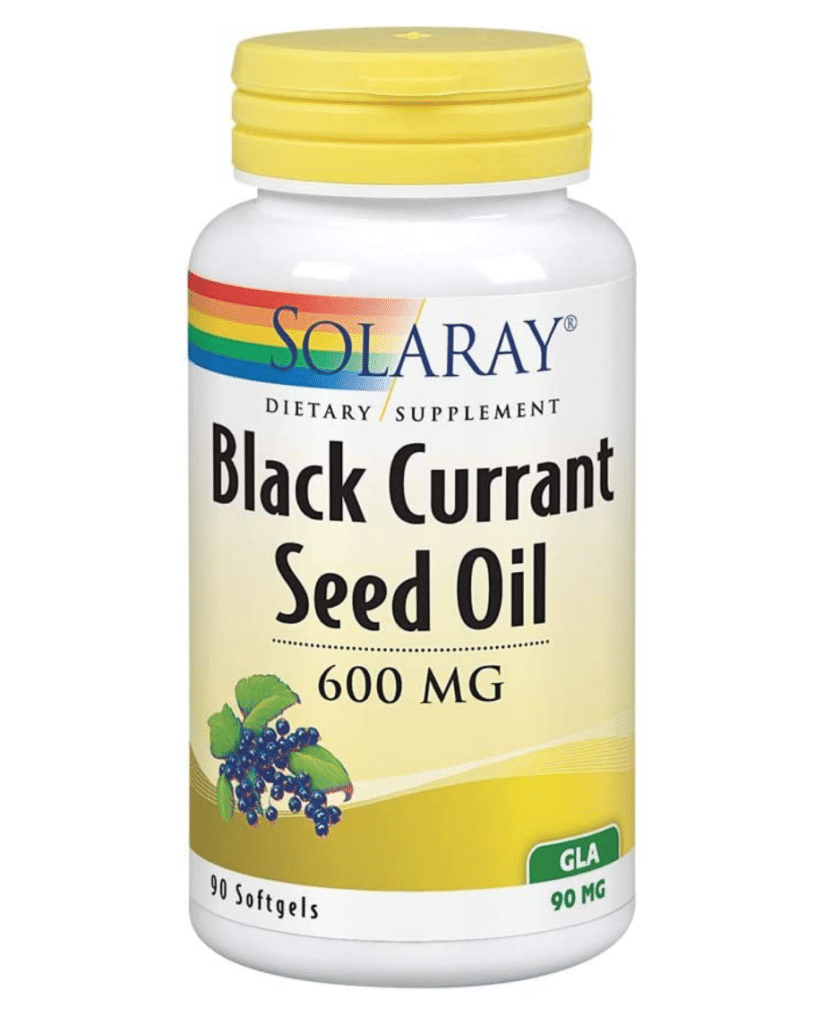
Our recommendation
Solaray Black Currant Seed Oil
90 mg GLA | 60 mg ALA
Solaray’s Blackcurrant Seed Oil contains 90mg of GLA, 60mg of ALA and 240mg of LA (another source of GLA, which also has its own health benefits including improved cardiovascular health)—a great combination of omega-3 and omega-6 fatty acids for your intended result. Each ingredient is tested via Nutraceutical Corp’s lab verification procedures to remove harmful impurities, thus creating a clean, potent product.
Unlike other brands, Solaray’s product is hexane-free (a harmful oil extraction technique) due to their cold-pressed methodology to extract the purest ingredients. With only 1 softgel capsule per serving and great value for money, Solaray’s Blackcurrant Seed Oil is highly recommended.
Blackcurrant seed oil is extracted from blackcurrant seeds and contains roughly 15% ALA, 13% GLA and 48% LA, the precursor to GLA . Under guidance from consumerlab.com, Solaray blackcurrant seed oil guarantees freshness – a high oxidation level has affected other brands selling blackcurrant seed oil, so we recommend sticking to our recommendation.
With respect to high GLA concentrations in this product, scientists have shown that blackcurrant seed oil is especially beneficial for older patients. Rheumatoid arthritis, an age-compromised immune system, and chronic dry eye are all treated effectively upon administration of blackcurrant seed oil. Interestingly, due to ALA and GLA anti-inflammatory properties, blackcurrant seed oil supplementation in pregnant mothers can reduce atopic dermatitis prevalence in newborns.
The Best Evening Primrose Seed Oil Brand
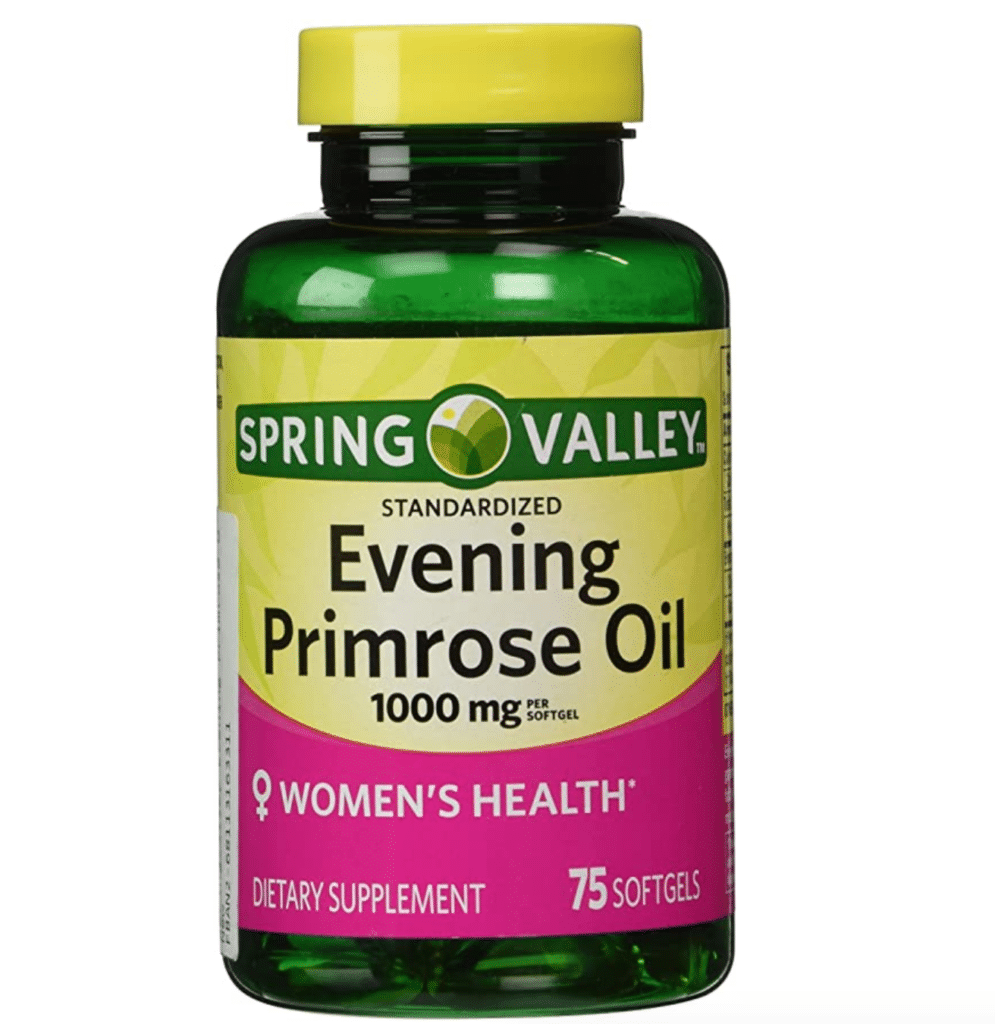
90 mg GLA
Spring Valley Evening Primrose Seed Oil
Spring Valley Evening Primrose Seed Oil is a GLA-heavy supplement. Each soft gel tablet contains 90mg GLA and 730mg LA, which Spring Valley recommends to take once three times daily (with each meal). Don’t worry about the dosage size; numerous clinical trials have confirmed GLA as nontoxic.
Spring Valley’s product is non-GMO, gluten-free and dairy-free, however it is not vegan friendly due to their use of bovine gelatin. Fortunately, their product is hexane-free, thus giving Spring Valley Evening Primrose Oil the thumbs-up as a safe product.
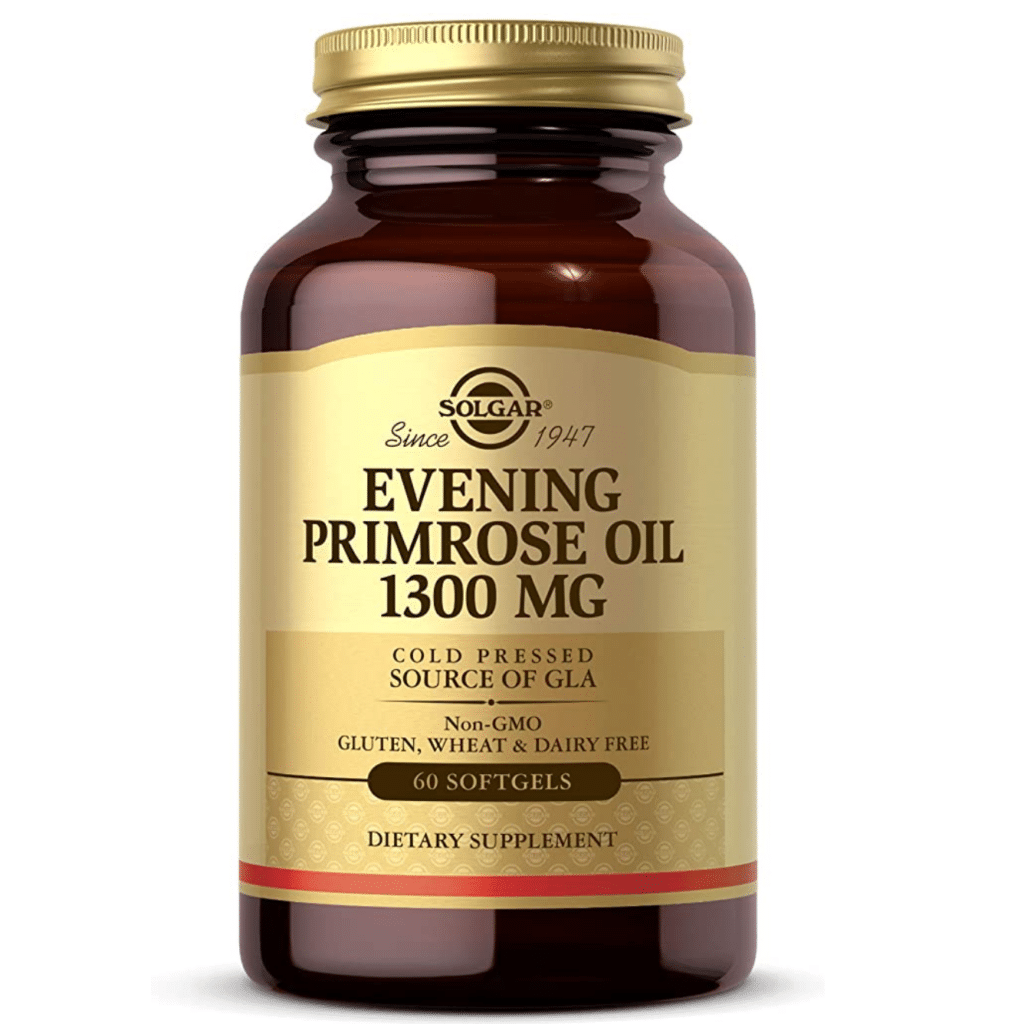
Additional evening primrose oil recommendation
Solgar Evening Primrose Oil
Solgar have existed since 1947 and own their trade when it comes to supplements. Their Evening Primrose is cold-pressed without chemical solvents, and they manufacture their product in small batches to ensure high product freshness and quality are maintained.
Each bottle contains 60 softgels: 949 mg LA and 117 mg GLA – to be taken twice daily. Further, their tablets are non-GMO, gluten-free and dairy-free. The only complaint on amazon is its tablet size. All in all, it looks like Solgar has met their mission statement – to craft the finest nutritional supplements.
Evening primrose seed oil (EPSO) is the most popular GLA source on the market. As expected, ESPO is effective in reducing rheumatoid arthritis due to GLA’s anti-inflammatory properties. Concerning women’s health, evening primrose seed oil may reduce the occurrence of hot flashes in menopausal women and treat PMS symptoms—though this finding remains controversial.
More promising results point towards EPSO’s beneficial impact on skin health. Due to the high quantity of GLA, EPSO treats atopic eczema and generally improves skin health. This is because GLA optimizes skin cell structure and function. GLA is also a precursor to prostaglandin e1—an effective bronchodilator—which aids in treating atopic asthma.
The Best Chia Seeds
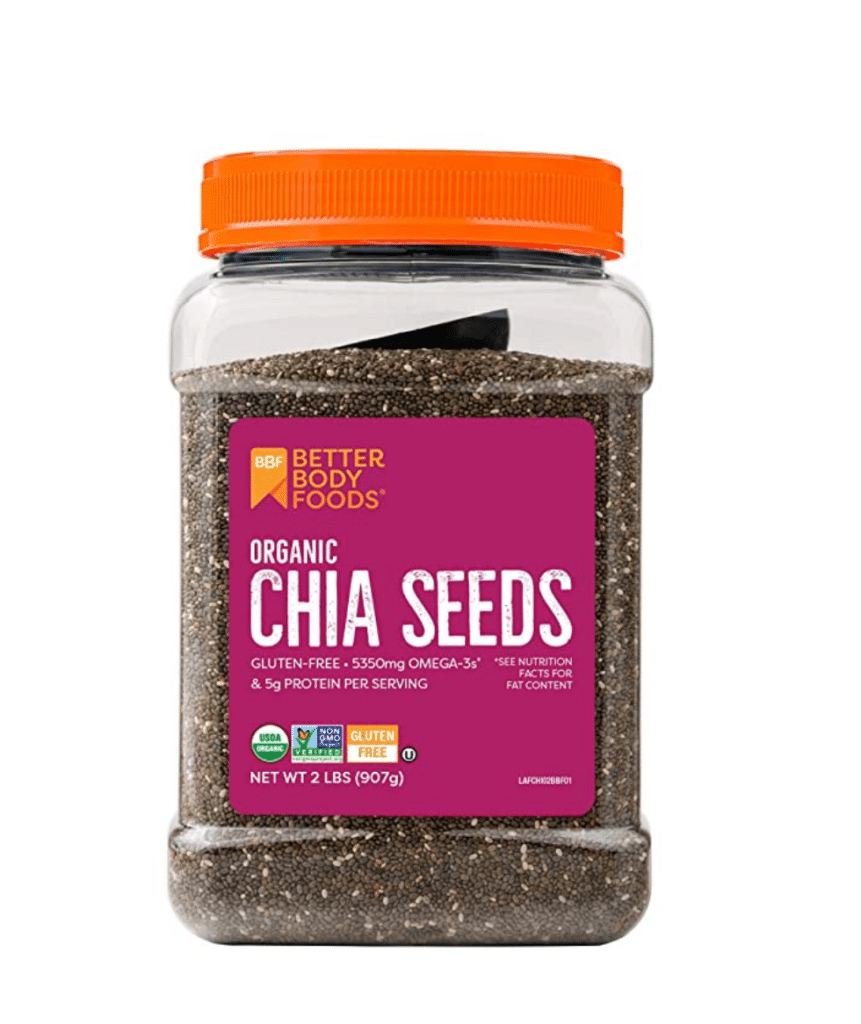
Rich source of ALA
Better Body Foods Organic Chia Seeds
Better Body Foods offers their chia seeds in a plastic tub complete with a measuring scoop. The serving size is recommended at 2.5 tbsp to provide you with 5,350 mg omega-3, 10g fiber and 5g protein for a beneficial result. As chia seeds are tasteless, you can incorporate them into any meal – blended or baked..
Their product is non-GMO, gluten-free, vegan-, paleo- and keto-friendly. The only complaint on amazon are bugs found in the container – an exceptionally rare occurrence. Do not be put off by this remark—a 4.7/5 star rating on amazon shows that Better Body Foods Chia Seeds is a safe, effective product.
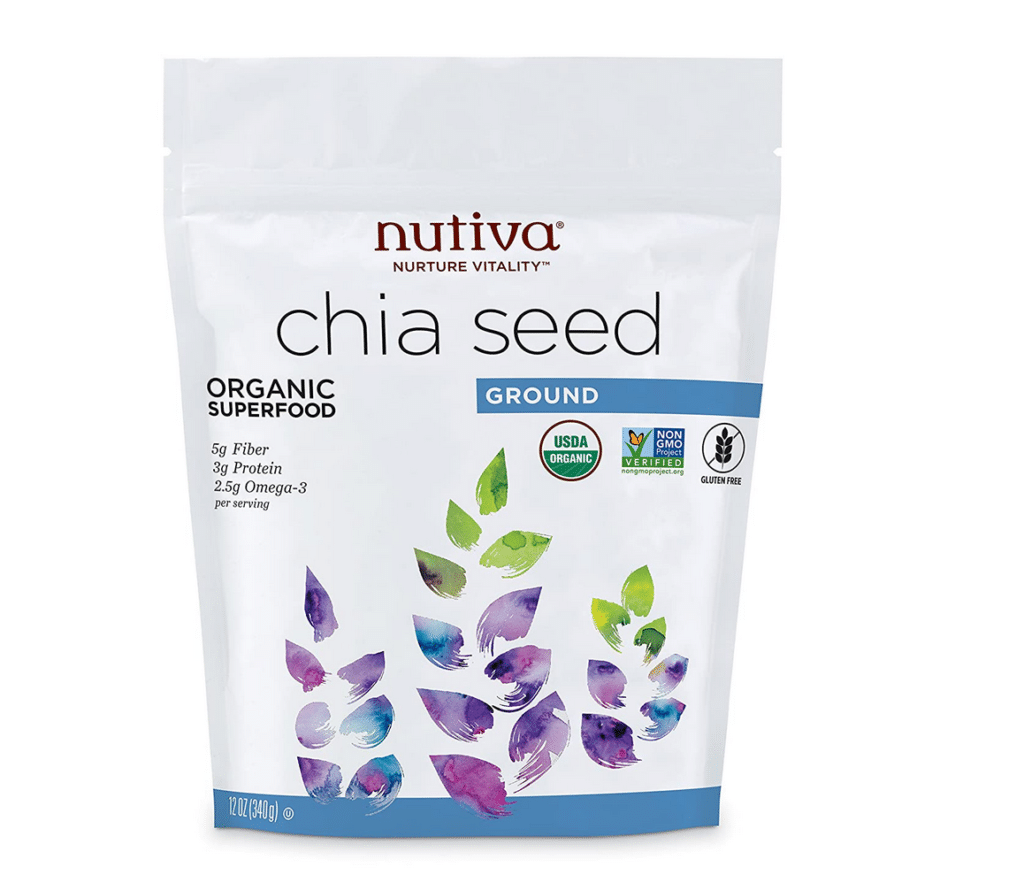
Additional Chia Seed Recommendation
Nutiva Ground Chia Seeds
Nutiva Ground Chia Seed is another option to obtain a rich source of ALA. In each serving (1 tbsp), 5g fiber, 3g protein and 2.5g omega-3 guarantees healthy goodness. Ground chia seeds enables easier incorporation into your favourite foods, whether it’s baking a cake or making a smoothie.
Their product is registered as USDA organic indicating that the chia seeds are grown in a synthetic fertilizer and pesticide-free environment. Further, like Better Body Foods, Nutiva Chia Seeds are non-GMO verified and gluten-free. Unlike Better Body Foods, Nutiva’s packaging goes up to 48 ounces.
Chia seeds also known as salba or Salvia Hispanica, contain an exceptionally high concentration of ALA—around 60%. ALA in chia seeds can convert to arachidonic acid, which inhibits proliferation in tumour cells in rats. This may carry promise for alternative medicine’s role in future cancer treatment. Chia seeds also contain antioxidants which may protect against cardiovascular disease and diabetes.
Aside from ALA and antioxidants, chia seeds are brimming with other beneficial nutrients including proteins, fibers, and vitamins and minerals such as carotenoids, magnesium, zinc and b vitamins. Chia seeds are therefore now included in food products to boost their nutritional value. For example, bakers incorporate chia seeds to boost protein and unsaturated fat levels in their dough.
However, chia seeds contain less oil than other seeds (i.e. flax seeds), so it’s important to consume a decent serving to gain these benefits. Consumerlab identified high levels of lead and inaccurate labeling in other chia seed products—following our recommendations will keep you safe and happy.
The Best Borage Oil
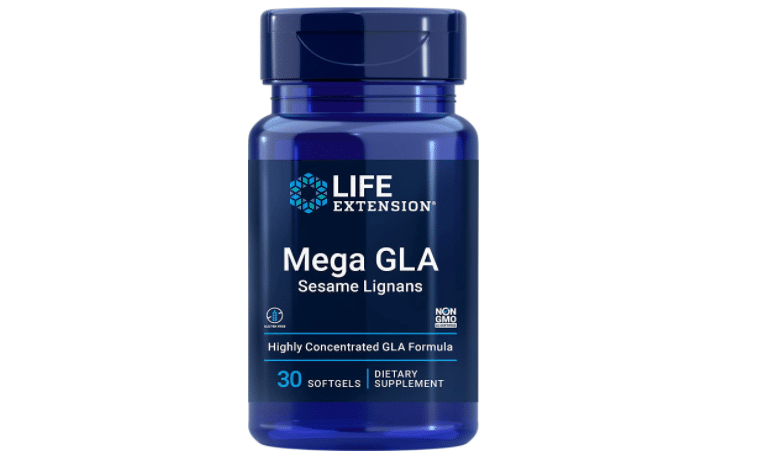
400 mg GLA
Life Extension Mega GLA
Life Extension Mega GLA is a commercial borage oil, extracted from the borage plant – a rich source of GLA. Each product contains 60 softgels – 1 per serving and contains 400mg of concentrated GLA. In addition, Life Extension have added 10mg of sesame lignan extract to enhance their product’s effectiveness by limiting GLA conversion.
Life Extension have good product transparency and are happy to provide a certificate of analysis for their product on request. However, it appears that Life Extension is a relatively new product to the market so reviews are few and far between. Though, so far, the product shows promise.
Borage oil is extracted from the Borage plant (Borago officinalis), which originates in Europe and North Africa, and is known for its high GLA content (25%). GLA supplementation also increases anti-inflammatory factors such as prostaglandin E.
With this pathway in mind, scientists have demonstrated that GLA via borage oil supplementation improves acne, atopic dermatitis (though this effect still remains weak) and rheumatoid arthritis. Therefore, borage oil perfectly illustrates GLA’s anti-inflammatory behavior.
Best ‘Combined’ Product
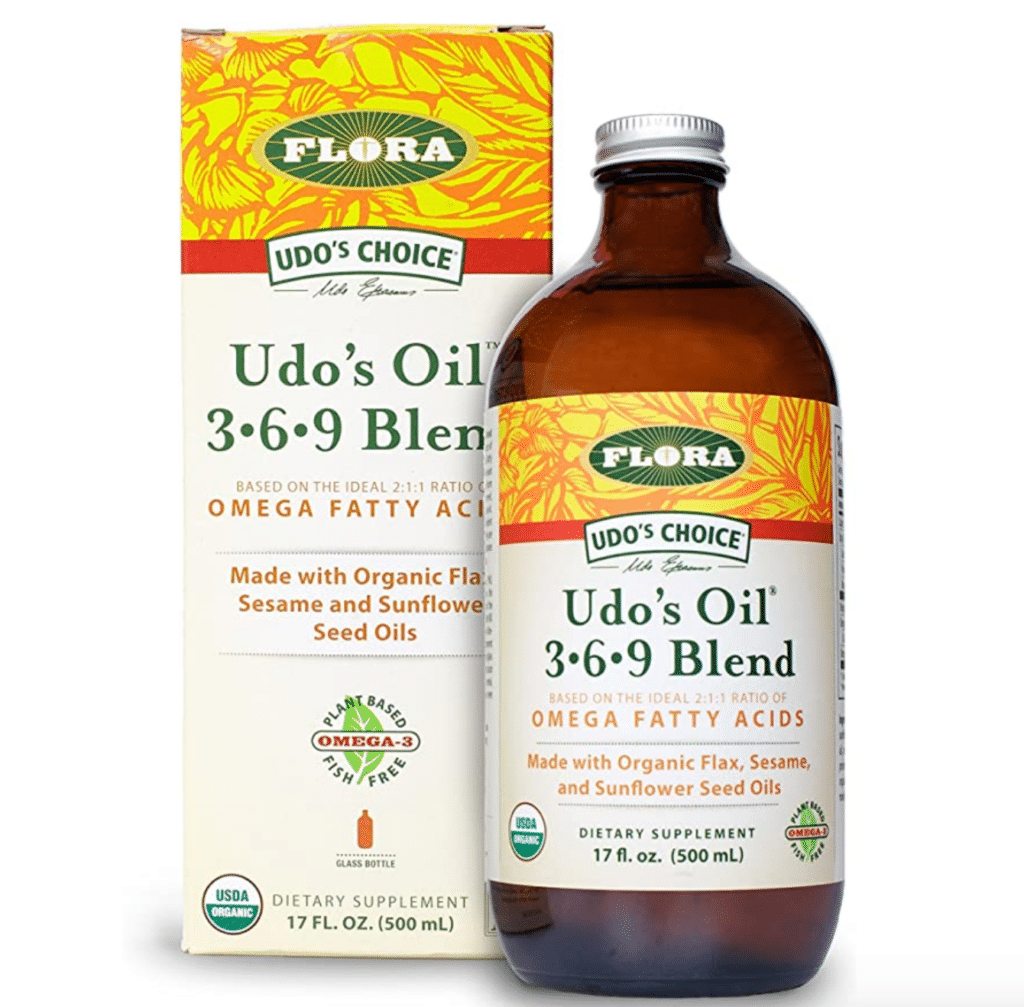
Omega 3-6-9 Blend
Flora Udo’s Oil 3-6-9-Blend
Flora Udo’s Combination product demonstrates strong scientific understanding, which is reflected in their book, Fats That Heal, Fats That Kill. Their blend contains an ideal ratio of omega-3 (6g ALA) to omega-6 (3g LA), 2:1, which is considered a beneficial balance between the two PUFAs.
Flora Udo’s product also includes omega-9 monounsaturated fatty acids (2.5g oleic acid), which offer cardio-protective benefits. Their fatty acids originate from a special formulation of natural, unrefined oils extracted using safe methods from organic sesame, sunflower, flax and evening primrose seeds, and coconut, rice and bran oils. This formulation originates from Udo Erasmus, PhD—a widely acknowledged specialist on essential fatty acids. The oil is administered at 1 tbsp per serving from an environmentally-friendly glass bottle.
Flora Udo’s combination product contains a wide range of oils for different health benefits. Sesame oil, sunflower oil, rice bran oil and evening primrose seed oil contain mainly linoleic acid (GLA precursor) and/or oleic acid, whereas flax oil contains more ALA in relation to LA to achieve a healthy omega-3 to omega-6 ratio.
Remember that these fatty acids are vital due to their anti-inflammatory, neuro-protective and anti-depressant properties. In addition, coconut oil contains a unique composition of fatty acids including the saturated fatty acid, lauric acid, which increases HDL (good) cholesterol – a vital cardio-protective feature.
Editor’s note: we are regularly updating this review. If you see any problems, weird interpretations of the data, or just want to say hi, please reach out to hello@the-unwinder.com.
